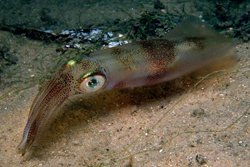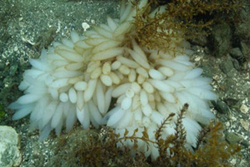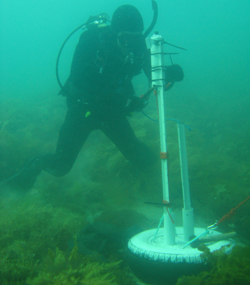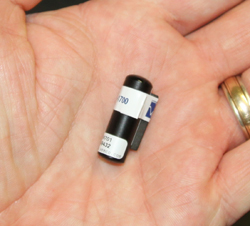Jigging for science - Defining the spawning needs of calamari in Port Phillip Bay





Targeting southern calamari (Sepioteuthis australis) in Victorian waters has become increasingly popular among recreational anglers and the charter-boat sector in recent years.
Information about calamari population dynamics is important because increased levels of fishing effort provides anecdotal evidence that exploitation levels may be increasing. Under this scenario, maintenance of critical habitats becomes even more important.
Although much work has been done on the biology of southern calamari, Fisheries Victoria's last stock assessment concluded that little is known about their spawning habitat, spawning behaviour and movement patterns in Victoria.
Understanding the spawning needs of calamari is necessary to ensure the ongoing management, success and enhancement of this presently sustainable fishery.
This project, funded by recreational fishing licences, aimed to fill our knowledge gaps on spawning variability, habitat use and movement in Port Phillip Bay.
We found that:
- calamari are capable of spawning throughout the year with peak spawning occurring between spring and summer;
- habitats of southern and western Port Phillip Bay are more important for reproduction and egg laying compared with habitats in the north and east;
- calamari prefer to attach egg strands to seagrass including Amphibolis antarctica, Zostera spp. and a variety of macro algae (seaweeds) found in southern and western Port Phillip Bay;
- larger calamari were found in southern Port Phillip Bay compared with northern regions;
- individual calamari are capable of moving relatively large distances but stay resident in southern Port Phillip Bay during spawning for about one week before moving away; and
- charter operators are willing to participate in recording recreational catch in logbooks.
Although localised depletion through intense fishing of spawning aggregations can occur, their biological, spawning and movement characteristics favours replenishment of population numbers.
Fisheries Victoria now has a greater understanding of the temporal and spatial spawning variability of this species, their use of various habitats, and a potential tool for monitoring fishing effort. This will be incorporated into future stock assessments with the objective of maintaining this as a sustainable fishery.
For a copy of the full report please email richard.rogala@vfa.vic.gov.au
